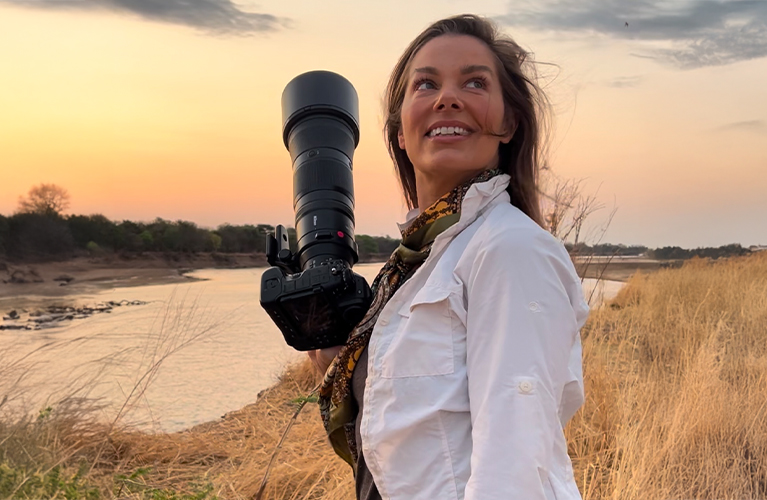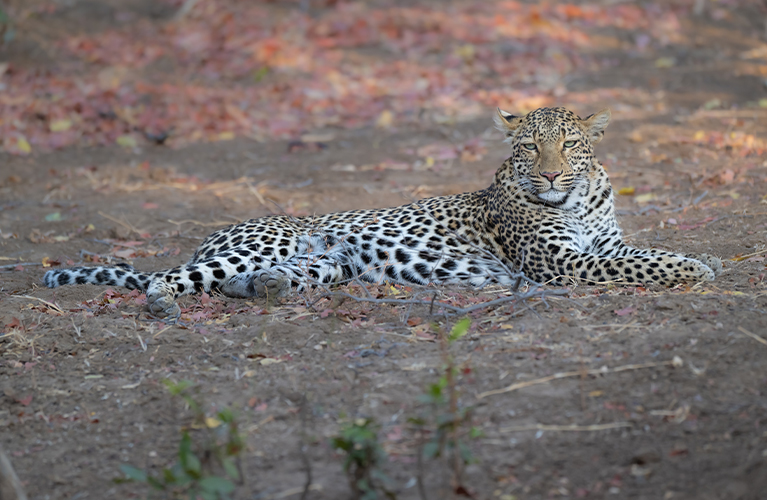
Zambia through the Eyes of Wildlife Filmmaker Hannah Stitfall
If you've ever dreamed of a true African safari, Zambia during the dry season is a must for any wildlife lover. It is somewhere that I had always dreamed of visiting as a wildlife filmmaker, and incredibly was offered the chance to go earlier on this year, which was a real pinch me moment! So this October, I set off with Dusty Boots Travel to embark on a two week African Safari adventure of a lifetime!
A country full of breathtaking landscapes and unparalleled wildlife, Zambia is also incredibly diverse; with 72 different languages spoken up and down the country, a result of the rich cultural diversity found here. Zambia truly encompasses every part of Africa’s immense beauty, and my first safari here during the dry season was nothing short of extraordinary!
When is the best time to visit Zambia?
The dry season in Zambia runs from around May to October, and it is the best time to visit for several reasons. First, the weather is generally mild and pleasant, with warm days and cooler nights, making it comfortable for days full of safari activities. Although I must add that this year has seen the dryest and hottest dry season in 200 years, so most days the temperature was still hitting just shy of 40 degrees, so was very hot. However, during the dry season, the lack of rain means that there is hardly any vegetation for the wildlife to hide away in, making it much easier to spot. Plus, as the water sources dry up, animals tend to congregate around remaining rivers, lakes and waterholes, looking for a drink, providing incredible game-viewing opportunities.
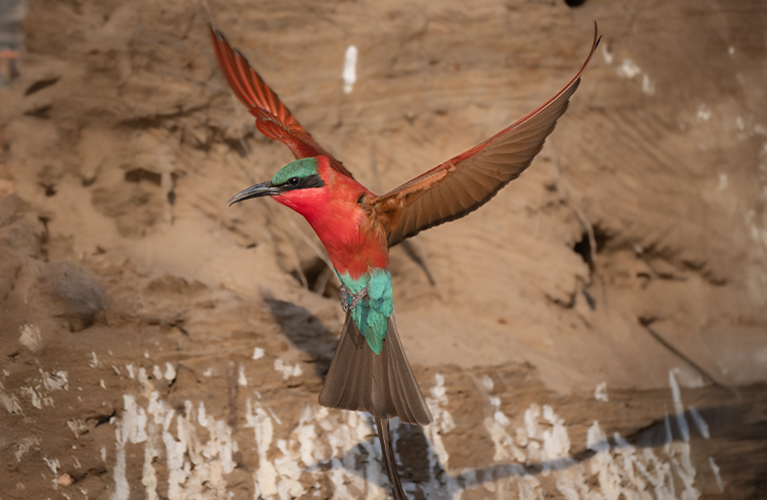
What is a Typical Day like on a Photography Safari?
I set off in October and Rhiann, our tour guide from Dusty Boots, had organised an incredible itinerary for myself and some other photographers and over the 2 weeks, we visited four different camps; Chiawa Safaris, Puku Ridge Lodge, Tena Tena camp run by Robin Pope Safaris, and lastly Mwamba camp ran by Shenton Safaris. It was a jam packed itinerary and each day we were up around 4:30am/5am for our first game drive which would usually finish at around 11am. Then we would head back to camp to offload our footage, shower, eat, try and sleep a little, before heading back out again at around 3pm for the afternoon evening game drive, coming back to camp at around 7pm. This was our itinerary every single day for the two weeks and whilst a little intense, it was well worth it for the wildlife sightings!
Why is the Luangwa Valley so special?
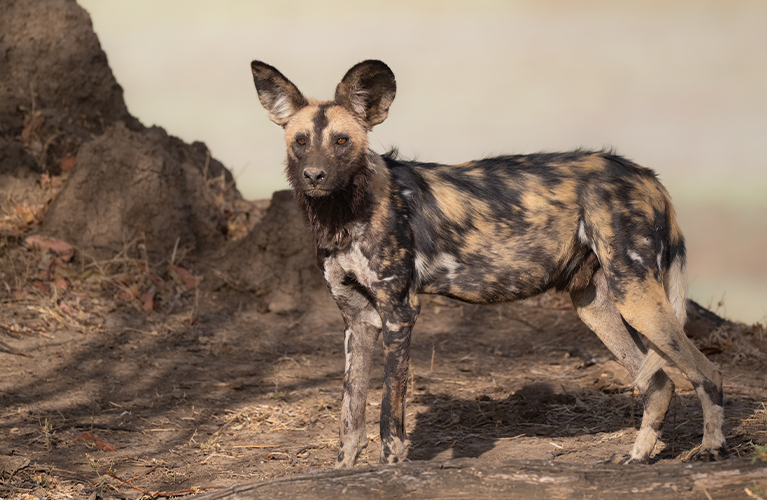
Over the course of the trip we travelled up Luangwa Valley, also known as the “Valley of the Leopards”. It is home to impressive populations of big cats, as well as hippos, elephants, zebras, buffalo, and over 400 bird species. The Luangwa River is the lifeblood of this ecosystem and in the dry season, it becomes a hub of animal activity, attracting thirsty wildlife from miles around. The dry season is also a fantastic time for birdwatching, as many migratory species pass through Zambia. South Luangwa is a bird lover’s paradise, with visitors able to spot species including the incredible carmine bee-eaters, which it’s safe to say, have now become my favourite birds!
We had the most incredible wildlife encounters, coming across lion kills, lion cubs, elephants, and I think there were only two or three game drives that we didn’t see a leopard! However one incredibly special species spot for me personally was seeing African wild dogs!
What are African Wild Dogs?
Also known as painted wolves, they are one of Africa’s most unique and endangered predators and one I hoped we might see, but they can travel up to 30 miles every day in search of food which can make finding them quite tricky, but we were incredibly lucky to not only see them once, but twice! And the second time, there were puppies!
They are known for their striking fur patterns that almost look like a patchwork coat of black, brown, white, and yellow. Each dog’s fur pattern is as unique as a fingerprint, providing them with excellent camouflage. They are highly social animals that live and hunt in packs led by an alpha pair, and their close-knit social structure is central to their survival. Unfortunately, their population has declined dramatically due to habitat loss, human-wildlife conflict and disease, making them one of Africa’s most endangered carnivores. Conservation efforts are now crucial to protect these fascinating animals and ensure their survival in the wild, hence why seeing them was even more special.
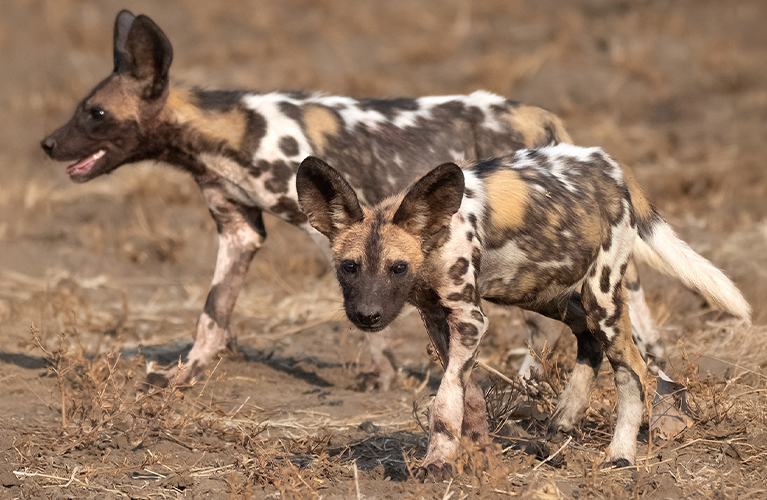
What equipment should you take on a Safari?
On this trip I took two cameras with me in order to not miss any shots by having to switch lenses as and when the action commenced. I had one with a long lens (180-600mm) for when the wildlife was far away, and the other lens a bit shorter (70-200mm), as the wildlife would come very close to the vehicle. I found this setup worked really well most of the time, apart from when the wildlife would walk directly next to the vehicle (which happened a lot!). I was also armed with my Craghoppers NosiLife range for the trip, which I pretty much lived in for the two weeks! I would always wear one of the shirts on the game drives and the trousers, as being by a river in Africa there were a lot of biting insects, but the gear kept them at bay throughout the trip thankfully and so I only had to apply mosquito repellent to my hands, neck and face!
All in all, I can’t recommend Zambia in the dry season enough for any wildlife photographer, filmmaker or someone that just wants to experience an incredible African wildlife safari. It’s safe to say, I will definitely be back one day, and I already cannot wait!
